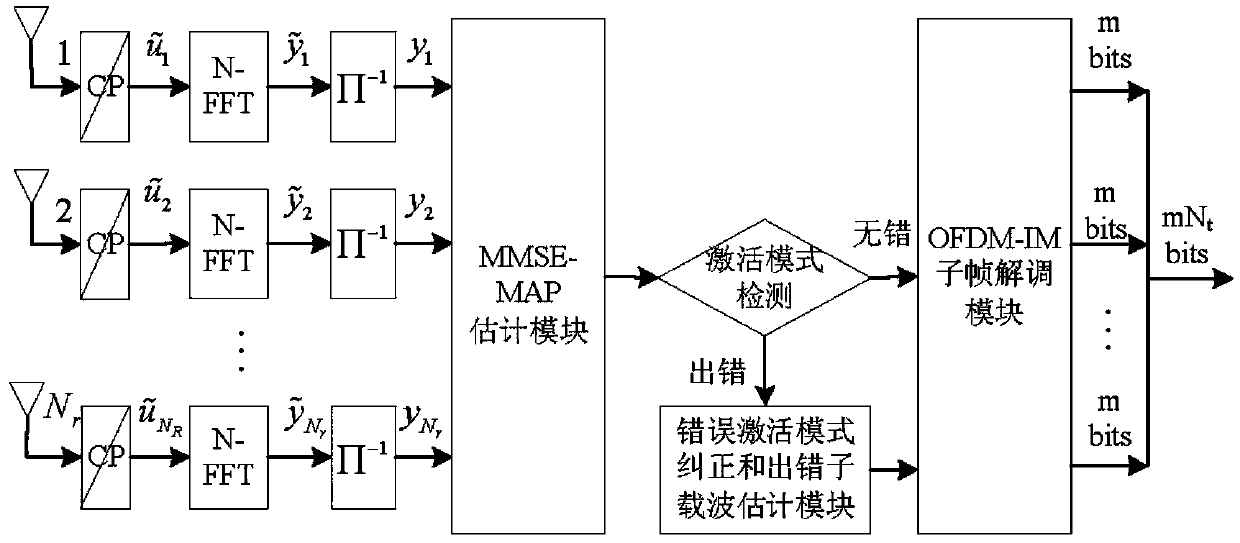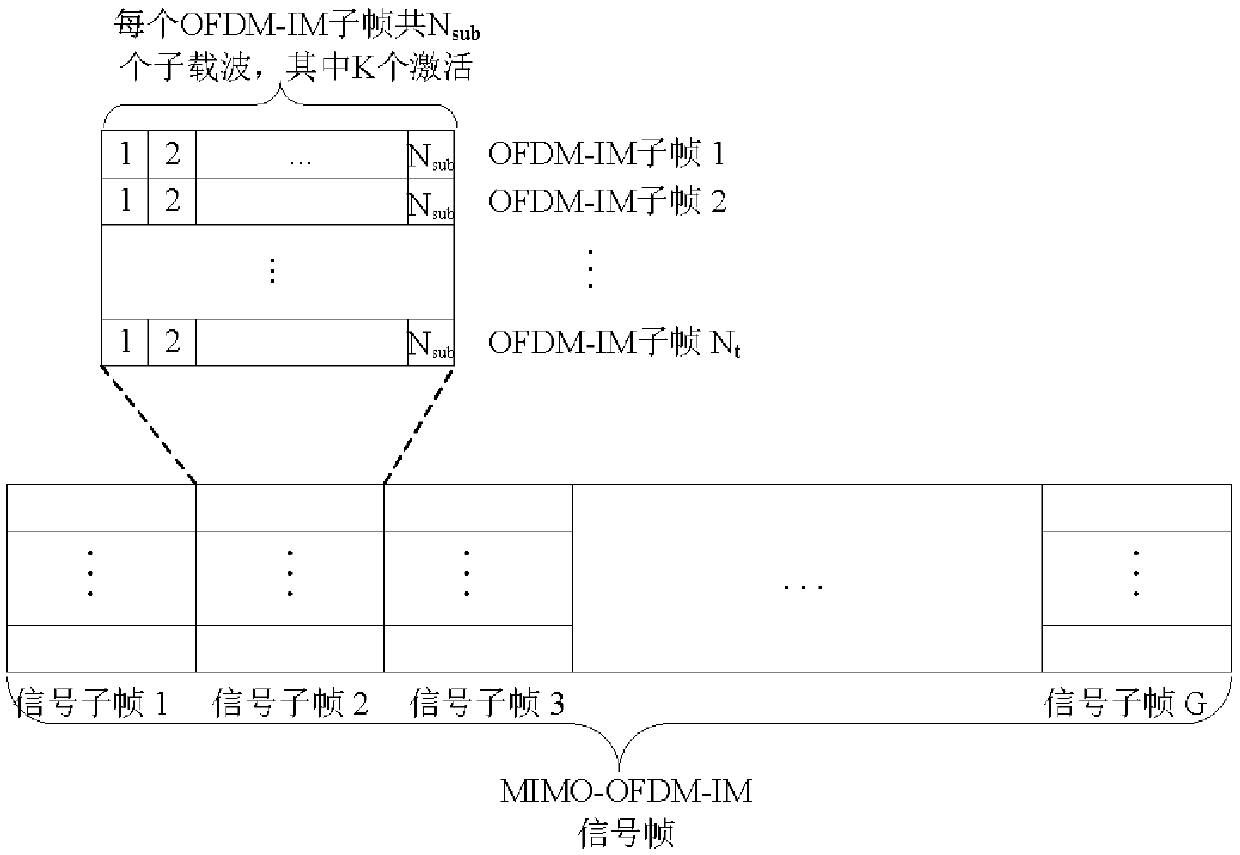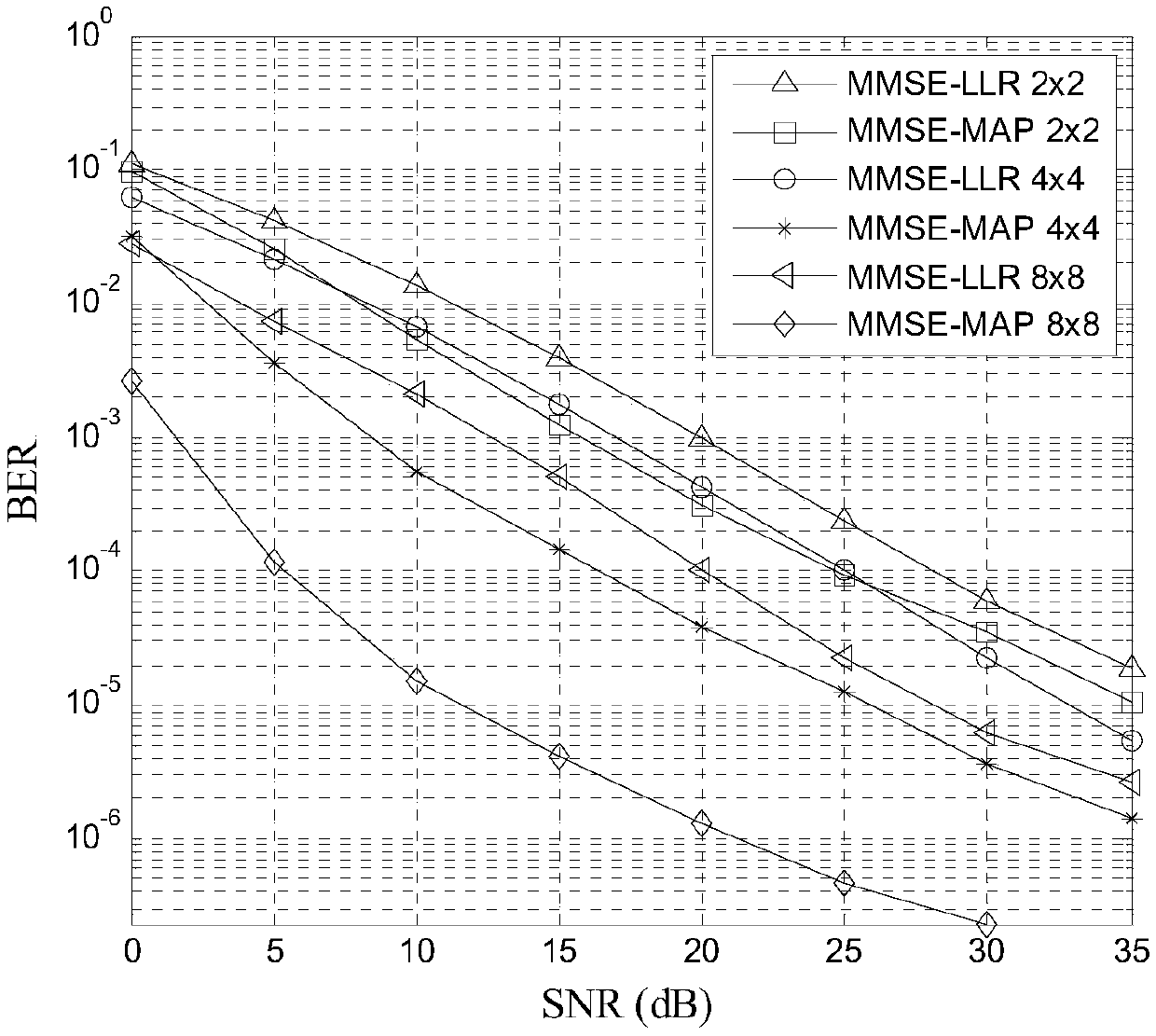Low complexity demodulation method for multiple-input multiple-output carrier sequence modulation system
A technology of carrier serial number and modulation system, applied in modulation carrier system, transmission system, multi-frequency code system, etc., can solve the problems of low complexity, large performance loss, restricting the use of ML receiver, etc., and achieve the effect of improving estimation accuracy
- Summary
- Abstract
- Description
- Claims
- Application Information
AI Technical Summary
Problems solved by technology
Method used
Image
Examples
Embodiment Construction
[0036] The specific implementation of the present invention will be further described below in conjunction with accompanying drawings and examples, but the implementation and protection of the present invention are not limited thereto. Achieved with technology.
[0037] The process and implementation modules of the low-complexity demodulation method for the multiple-input multiple-output carrier number modulation system of this example are as follows figure 1 As shown, the specific implementation steps are as follows.
[0038] According to the carrier sequence number modulation method of each transmitting antenna at the transmitting end, the received signal frame can be divided into G signal subframes that are independent of each other. The frame structure diagram of the received signal frame is as follows figure 2 shown. Take out the reception matrix of the gth signal subframe currently demodulated, and the signal model of the nth subcarrier is Where g=1,2,...,G signal s...
PUM
 Login to View More
Login to View More Abstract
Description
Claims
Application Information
 Login to View More
Login to View More - Generate Ideas
- Intellectual Property
- Life Sciences
- Materials
- Tech Scout
- Unparalleled Data Quality
- Higher Quality Content
- 60% Fewer Hallucinations
Browse by: Latest US Patents, China's latest patents, Technical Efficacy Thesaurus, Application Domain, Technology Topic, Popular Technical Reports.
© 2025 PatSnap. All rights reserved.Legal|Privacy policy|Modern Slavery Act Transparency Statement|Sitemap|About US| Contact US: help@patsnap.com



